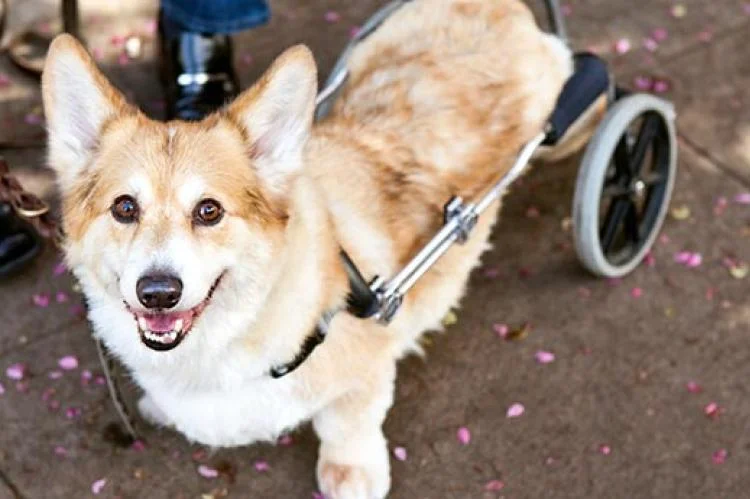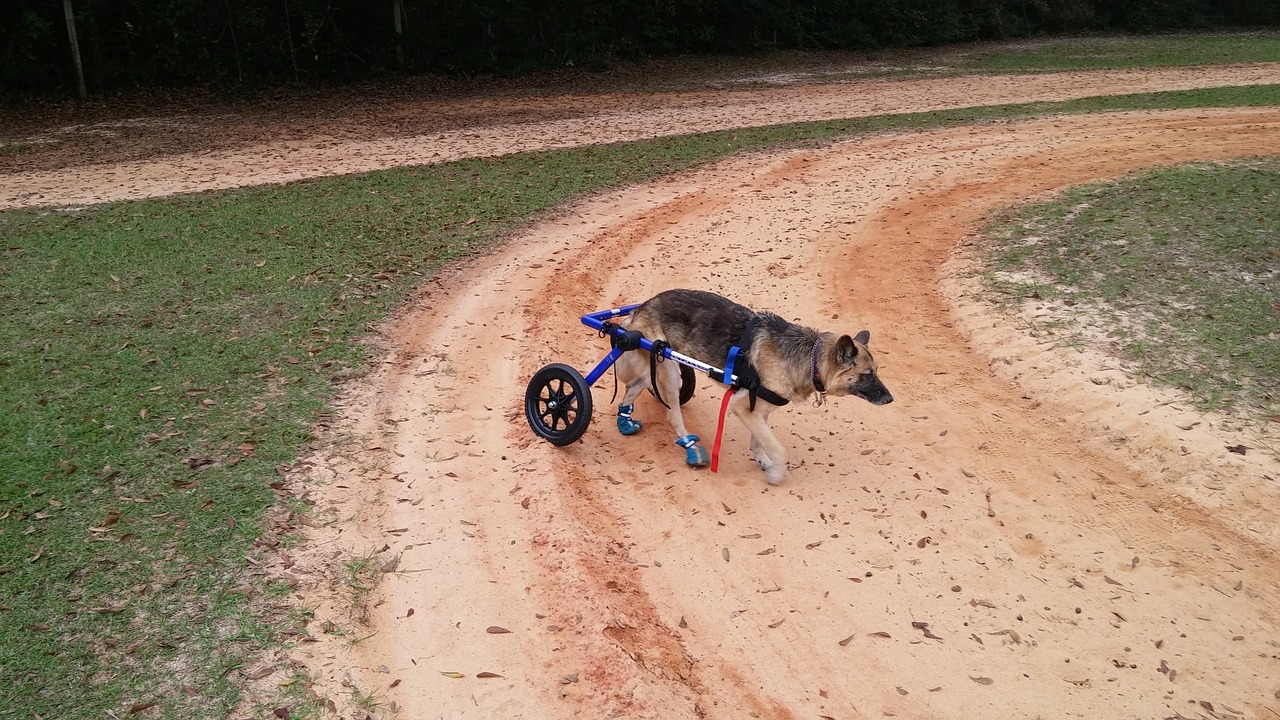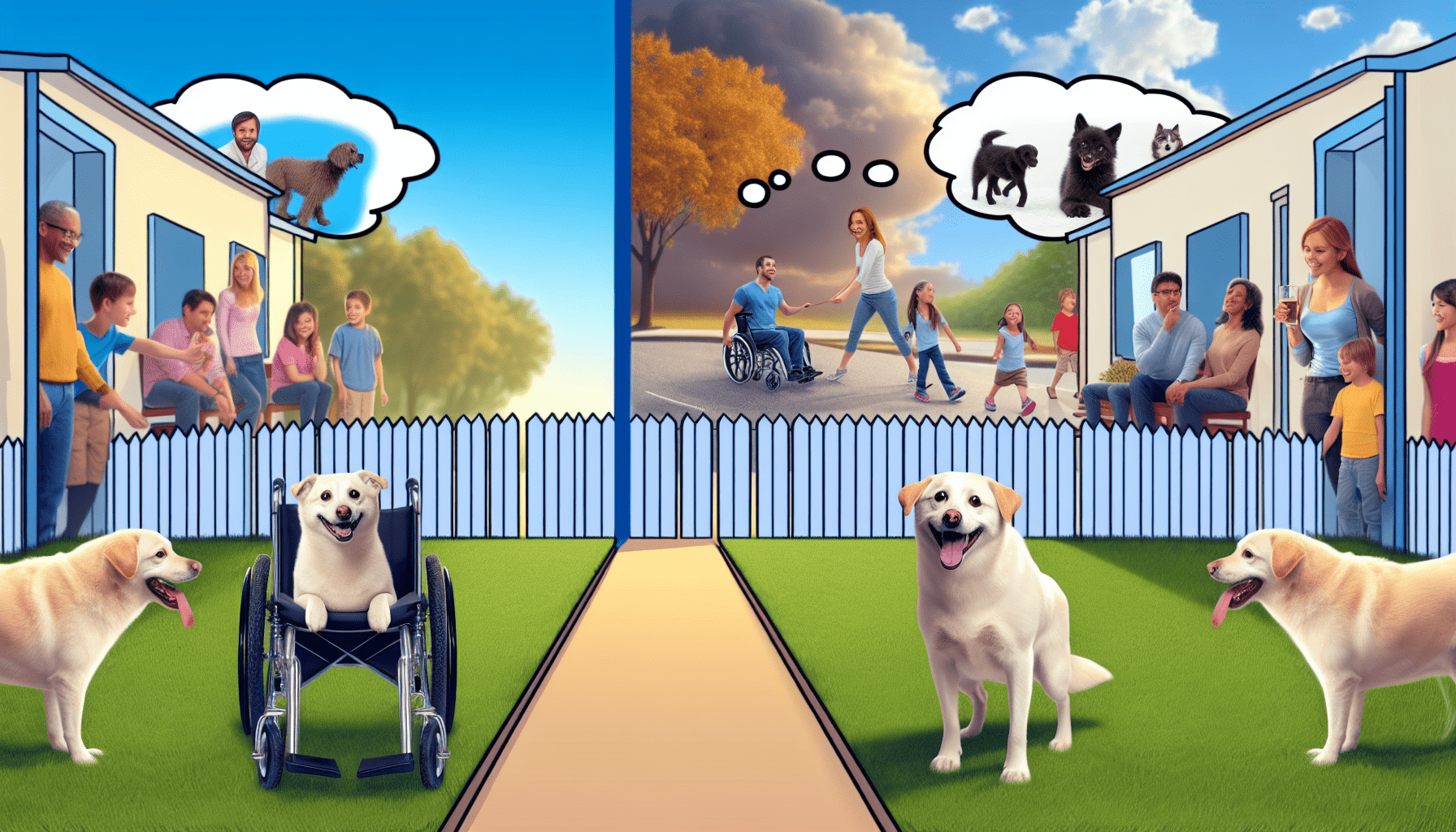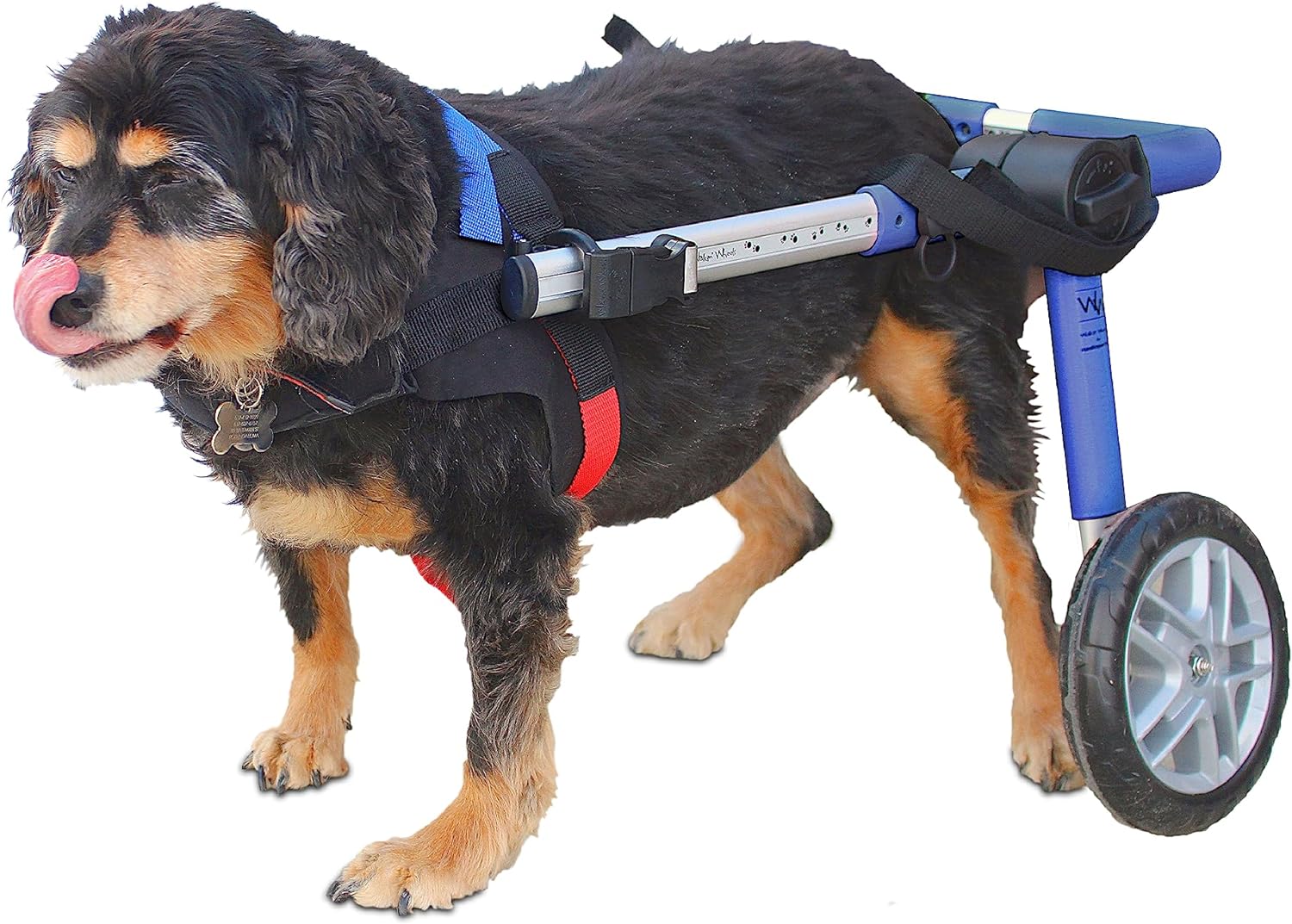Have you ever wondered if dogs in dog wheelchairs are truly happy? This article explores the emotional well-being of our furry friends who rely on wheelchairs for mobility. While it’s easy to assume that the absence of their natural abilities may lead to sadness or frustration, it’s important to understand that dogs are resilient beings who adapt to change remarkably well. By examining the experiences of both dog owners and veterinary experts, we can gain insight into the positive impact dog wheelchairs have on their quality of life and overall happiness.
Physical and Mental Well-being of Dogs in Wheelchairs
Physical Comfort and Mobility
When a dog becomes disabled and requires a wheelchair for mobility, it is natural to wonder how their physical comfort and mobility will be affected. However, it is important to understand that dogs in wheelchairs can still lead fulfilling lives. Wheelchairs are designed to take the pressure off the dog’s legs and provide support, allowing them to move around and explore their environment comfortably. With the proper adjustments and fitting, dogs in wheelchairs can experience increased mobility and enjoy daily activities such as walking, running, and playing with their human companions.
Mental Stimulation and Engagement
In addition to physical comfort, mental stimulation and engagement are crucial for the well-being of dogs in wheelchairs. Dogs are intelligent animals that thrive on mental challenges and interactions. Incorporating activities such as puzzle toys, treat-dispensing toys, and training sessions can provide mental stimulation and keep their minds active.
Factors Influencing Dog’s Happiness in a Wheelchair
Individual Dog’s Personality
The happiness of a dog in a wheelchair is influenced by its unique personality traits. Some dogs are naturally resilient and adapt quickly to new situations, while others may take more time to adjust. Understanding your dog’s personality and providing the necessary support and care tailored to their needs can greatly contribute to their overall well-being.
Adjustment Period
Adjusting to life in a wheelchair can be a period of transition for both the dog and their owners. Dogs may initially feel frustrated or confused about their changed mobility, while owners may experience a range of emotions as well. It is important to be patient and allow for a gradual adjustment period. With time, most dogs adapt remarkably well to their wheelchairs and regain their zest for life.
Supportive Environment and Caregivers
The support and care provided by the environment and caregivers play a significant role in a dog’s happiness in a wheelchair. Creating a safe and accessible living space, providing a balanced diet, and ensuring regular exercise are essential. Additionally, a caring and understanding attitude from the owners and family members helps maintain a positive and supportive environment for dogs in wheelchairs.
Appropriate Fit and Adaptability of the Wheelchair
The proper fit and adaptability of the wheelchair are crucial factors in ensuring the dog’s happiness and comfort. It is important to consult with a veterinarian or a specialist who can assess the dog’s measurements and recommend the most suitable wheelchair. A well-fitted wheelchair will provide optimal support, minimize discomfort, and enable the dog to move with ease.
Physical Health Benefits for Dogs in Wheelchairs
Improved Muscle Strength and Endurance
Contrary to popular belief, using a wheelchair can actually improve a dog’s muscle strength and endurance. The act of propelling themselves forward with their front legs helps to build strength in their upper body muscles. Additionally, regular exercise and physical therapy can be incorporated into their daily routine, further enhancing their muscle strength and endurance.
Increased Circulation and Cardiovascular Health
Engaging in physical activity while in a wheelchair promotes increased circulation, which is beneficial for a dog’s cardiovascular health. By using their front legs to move the wheelchair, dogs can experience improved blood flow and a healthier cardiovascular system. This can contribute to their overall well-being and longevity.
Pain Relief and Comfort
When a dog is unable to use their hind legs, the added strain on their front legs can lead to discomfort and pain. However, a properly fitted wheelchair can alleviate this strain by distributing the weight more evenly throughout the body. By reducing the pressure on the front legs and spine, dogs in wheelchairs can experience significant pain relief and increased comfort.
Reduced Risk of Secondary Injuries
A wheelchair provides stability and support, reducing the risk of additional injuries that may occur as a result of dragging or mishandling the hind legs. By preventing further damage and promoting proper alignment, a wheelchair can help protect dogs in vulnerable situations, allowing them to live their lives without fear of causing harm to themselves.
Psychological Benefits for Dogs in Wheelchairs
Regained Independence and Autonomy
One of the most significant psychological benefits for dogs in wheelchairs is the sense of regained independence and autonomy. Being able to move on their own, explore their surroundings, and engage in activities they love can greatly improve their overall well-being. This newfound independence can uplift their spirits and help them maintain a positive outlook on life.
Reinstated Sense of Purpose and Confidence
For many dogs, losing their mobility can result in a loss of purpose and confidence. However, a wheelchair can help reinstate these important aspects of their lives. Being able to carry out daily tasks such as going for walks, playing fetch, or even just being able to move around freely can give dogs a renewed sense of purpose and boost their self-confidence.
Emotional Support and Bonding
Entering a new phase of life with a wheelchair can be emotionally challenging for both dogs and their human companions. However, it also presents an opportunity for strengthening the bond between them. Supporting and providing emotional reassurance to dogs in wheelchairs can help them navigate any emotional struggles they may face. Moreover, the bond between a dog and their caregiver can strengthen as they work together to overcome the challenges associated with using a wheelchair.
Reduced Anxiety and Stress
Living with a disability can sometimes induce anxiety and stress in dogs. However, the use of a wheelchair can alleviate some of these negative emotions. By enabling dogs to move around freely and maintain an active lifestyle, wheelchairs can help reduce anxiety and stress levels. Dogs in wheelchairs can continue to participate in their favorite activities, spend quality time with their owners, and enjoy a sense of normalcy in their lives.

Challenges Faced by Dogs in Wheelchairs
Limited or Altered Mobility
While wheelchairs significantly improve a dog’s mobility compared to not having one, there are still limitations and adjustments that need to be made. Dogs may need to adapt to a modified way of movement, relying on their front legs or a combination of front and back legs. Additionally, certain terrains may pose challenges that need to be navigated carefully. It is important for owners to be aware of these limitations and provide extra assistance and support when needed.
Adapting to New Way of Movement
For dogs who have lost their ability to walk, adapting to a new method of movement can be a learning process. Dogs will need time to adjust to the sensation of using a wheelchair and develop the coordination and strength required to propel themselves. Patient training and gradual introduction to the wheelchair can help dogs become comfortable and confident in their new way of getting around.
Potential for Skin Irritations or Pressure Sores
The use of a wheelchair can occasionally lead to skin irritations or pressure sores. Prolonged periods of pressure on certain areas can cause discomfort and skin breakdown. Regular checks of the dog’s skin and padding adjustments can help mitigate this risk. Additionally, providing proper cushioning and ensuring that the wheelchair is fitted correctly can help prevent the development of skin issues.
Emotional Frustration
Dogs in wheelchairs may experience moments of emotional frustration, particularly during the initial adjustment period. It is essential to provide emotional support and reassurance during these times. Patience, consistent training, and positive reinforcement can help dogs overcome any emotional challenges they may face.
Adapting Life with a Wheelchair for Dogs
Gradual Introduction to the Wheelchair
Introducing a wheelchair to a dog should be done gradually and with patience. Start by allowing the dog to sniff and explore the wheelchair in a comfortable and stress-free environment. Once the dog displays curiosity and acceptance, gently introduce them to the wheelchair by assisting them in sitting in it or attaching it to their body.
Encouraging Exercise and Physical Therapy
Regular exercise and physical therapy are important components of a dog’s life in a wheelchair. Just because they cannot walk as they used to does not mean they should be deprived of physical activity. Encourage your dog to engage in play, use their front legs to propel themselves, and participate in any recommended physical therapy exercises. This will help maintain muscle strength, prevent stiffness, and promote overall physical well-being.
Adapting Living Space and Accessibilities
Modifying the living space for a dog in a wheelchair is crucial to ensure their comfort and safety. Clear pathways, remove obstacles, and create ramps or other accessibility solutions to make it easier for your dog to navigate around the house or outdoor areas. Providing non-slip surfaces and comfortable resting areas can also contribute to their overall well-being.
Regular Vet Check-ups and Maintenance
Routine vet check-ups are essential for dogs in wheelchairs to monitor their overall health and well-being. Regular examinations can help identify any potential issues or discomfort and suggest appropriate measures for prevention or improvement. Additionally, the wheelchair itself may require maintenance and adjustments over time to ensure its continued effectiveness and fit for the dog.
Support and Resources for Dogs in Wheelchairs
Veterinary Rehabilitation Specialists
Consulting with a veterinary rehabilitation specialist can provide valuable insights and assistance in caring for a dog in a wheelchair. These professionals have specialized knowledge in the field of animal rehabilitation and can provide recommendations tailored to the individual needs of the dog.
Assistive Devices and Accessories
Various assistive devices and accessories are available to enhance the comfort and mobility of dogs in wheelchairs. These can include harnesses, slings, and protective gear for different weather conditions. Exploring these options and finding the ones that best suit the dog’s needs can greatly contribute to their overall well-being.
Community Support and Online Forums
Connecting with other dog owners who have experience with wheelchairs can be incredibly helpful and provide a sense of support. There are many online forums and communities dedicated to sharing knowledge, experiences, and resources for dogs in wheelchairs. Joining these communities can help owners navigate the challenges and provide comfort knowing that they are not alone in their journey.
Case Studies and Success Stories
Dogs Thriving in Wheelchairs
There are numerous heartwarming stories of dogs thriving in wheelchairs and experiencing an improved quality of life. These stories serve as a testament to the resilience and adaptability of dogs. From running in the park to participating in agility competitions, dogs in wheelchairs continue to lead fulfilling lives despite their physical limitations.
Rehabilitation Progress and Quality of Life Improvements
Case studies highlighting the rehabilitation progress and quality of life improvements seen in dogs in wheelchairs are inspiring and encouraging. Through proper care, training, and support, dogs have shown significant improvements in mobility, muscle strength, and overall well-being. These success stories demonstrate that with the right resources and dedication, dogs can experience a happy and fulfilling life in a wheelchair.
Considering a Wheelchair for Your Dog
Consultation with Veterinarian
Before considering a wheelchair for your dog, it is important to consult with a veterinarian. They can assess your dog’s specific needs, evaluate their overall health, and provide guidance on whether a wheelchair is a suitable option. Veterinarians can also recommend reputable manufacturers or assistive device providers that can offer the best options for your dog’s specific needs.
Proper Fitting and Measurement
The proper fitting and measurement of a wheelchair are essential to ensure the dog’s comfort and mobility. It is important to accurately measure your dog’s size and dimensions and share this information with the manufacturer or provider when ordering a wheelchair. A well-fitted wheelchair will provide optimal support and enable the dog to move freely without discomfort or restrictions.
Acclimation and Training
Once the wheelchair is acquired, acclimating the dog to it is crucial. This process requires patience, consistency, and positive reinforcement. Gradually introduce the wheelchair to the dog, praising and rewarding them for their curiosity and acceptance. Encourage them to explore and move around with the wheelchair, ensuring their comfort and safety at every step. Consistent training will allow the dog to build confidence and become accustomed to their new way of getting around.
Conclusion
Contrary to the initial concerns one may have, dogs in wheelchairs can lead happy and fulfilling lives. With the right care, support, and resources, they can enjoy physical comfort, mental stimulation, and engage in activities that bring them joy. From improved muscle strength and endurance to regained independence and emotional support, wheelchairs offer numerous benefits for dogs. Despite the challenges they may face, dogs in wheelchairs exhibit resilience, adaptability, and a zest for life. Whether it is through gradual adjustment, regular exercise, or a supportive community, dogs in wheelchairs continue to inspire us with their extraordinary ability to thrive and find happiness.



